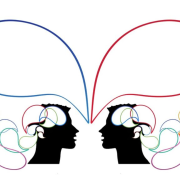
Estimates suggest that 6 to 7% of US people suffer from dual diagnosis. We also call it a co-occurring disorder. When you have a substance addiction with mental health problems, you need integrated dual-diagnosis treatment.
Often, you might turn to drugs when you have chronic mental health problems. Mental health issues might also lead you to alcohol or other stimulant abuse.
Don’t worry. You can now cure dual diagnosis completely. Here, we will look at the prime approaches that are also the most effective.
Features Of The Treatment Of A Double Diagnosis
It is not easy to detect dual diagnosis. Doctors must go through a comprehensive examination to detect it. After that, they can launch a suitable integrated dual-diagnosis treatment plan.
The examination includes anamnesis, psychological analysis, and psychiatric tests. Often, the doctor might need to do a blood test with a urine R/E. I have also seen doctors doing saliva analysis and other objective assessments to detect double diagnosis.
Stay away from self-medication. You must follow clinical guidance avidly once the doctor detects a double diagnosis. Firstly, this disease is not as simple as drug addiction or alcoholism. It is even more gruesome than critical mental disorders.
You cannot cure such a patient without an efficient and integrated dual-diagnosis treatment plan.
The treatment process is also tedious. Firstly, the doctor revisits your addiction problems. You can seek help in dual diagnosis treatment in a rehab center ln California or another state. Such rehabs are found everywhere. All that remains is to choose the most convenient one.
Benefits of the integrated treatment of a double diagnosis

The integrated therapy during double diagnosis creates a holistic approach. Firstly, it acknowledges the link between mental health issues and addiction. Hence, it becomes easier to treat both concurrently.
As a result, individuals can improve their coping skills. They can also develop strategies to manage both conditions equally.
Secondly, integrated treatment can help you manage individual development goals. Dual diagnosis comes with a precise treatment plan that targets the individual’s unique challenges.
Whenever an individual manages the two conditions together, there are some unique challenges.
Now, you might be facing an appetite disorder with anxiety or substance abuse with depression. In any dual diagnosis, such unique challenges are shared.
Further benefits of integrated dual diagnosis treatment
The integrated dual diagnosis treatment maintains a bridge between mental health and addiction treatment. Hence, the patient gets a care plan that aligns with the goals and values of both treatments.
However, patients must choose to use evidence-based practices with holistic therapies. They ensure a higher success rate during integrated dual-diagnosis treatment.
Scopes of dual diagnosis
Integrated dual diagnosis treatment mainly treats a mental condition alongside a substance use case. When these two combine, you might be facing one of these issues:
- Chronic anxiety disorders
- Frequent mood disorders
- Sustained personality disorders
- High level of PTSD with impact on brain and body
- Attention Deficit Hyperactivity
Signs of having co-occurring disorders
Are you suffering co-occurring disorder? It’s time to choose integrated dual diagnosis treatment. But how to detect such an issue? You will have many problems that hint at this problem. But the following issues are very apparent.
And none of these are regular issues you face in daily life. At the same time, don’t forget you are dealing with your addiction problem already. The problems prominent include abandoning good friends for the sake of new ones. Patients may also face trouble in their home or school. It is mainly due to their substance abuse.
You may also observe things like lying, cheating, and manipulating.
When your loved one behaves like this, you should know they are suffering from a double diagnosis. Meanwhile, they will also show common signs of mental and psychological disorders like abrupt sleeping, poor appetite, and nonregulated eating patterns.
Features of Treatment of Dual Diagnosis:
- complex therapy using several methods at once;
- treatment of two diseases simultaneously;
- timely adjustment of the treatment program depending on the observed dynamics;
- refusal from standard schemes and protocols in favor of an individual approach to treatment.
Medication
You cannot treat co-occurring disorders without medicines. So start your medications today. But why medications?
It is mainly to prevent the addiction problem from growing fast. It also slows down mental illness. Meanwhile, medication can avoid a relapse into addiction and many other complications. So, what are the common medications for this problem?
- antidepressants;
- neuroleptics;
- anxiolytics;
- mood stabilizers;
- partial agonists and opioid receptor antagonists;
- drugs to reduce craving for psychoactive substances;
- vitamin and mineral complexes.
The state of a double-diagnosis patient may change quickly. Hence, you must prescribe medications based on the current state. Therefore, you must do your clinical observation slowly and with utmost attention.
I prefer doctors to check patience in a close environment, where the patient can behave normally.
Psychotherapy

Psychotherapy is of many kinds. Many of these techniques can improve mental health to a reasonable extent. Most importantly, they can reduce substance abuse also.
Some of the popular therapies are psychotherapy, dialectical behavioral therapy, and cognitive therapy. But it depends on the doctor to choose one. Meanwhile therapy can change the perception and thoughts among the patients. Hence, the patients might start behaving naturally after the treatment.
Why is therapy necessary?
Do not only depend on drugs. Most drugs have a sustainable effect. So patients must get up the courage and fight the distorted thinking. They have to fight triggers to overcome the challenges. They must know that there will be psychoactive substances around.
But they must also believe that the world seems different without them. I know it takes a lot of time. Therefore, the treatment last for up to 6 months.
You can carry on psychotherapy in groups or on a one-on-one basis. Most importantly, we are dealing with the combined approach here. Hence, patients have to manage stress and increase their confidence. They must try to create an amicable interpersonal relationship with their doctor.
In the same vein, family therapy has a vital role to play. Each relative can play their part. And help their family members to revive quickly.
Rehabilitation programs
Tailored individually to each dual diagnosis case, rehabilitation programs help patients regain their health, improve their quality of life, and return to their social environment. This approach dramatically reduces the likelihood of relapse to drug and alcohol use.
Rehabilitation programs are individualized and comprehensive. They usually include medication support, psychotherapy, physical recovery (sports), participation in training for integration into society, and much more.
After completing a rehabilitation program, the patient should undergo regular check-ups to monitor the condition and adjust the recovery approach. It may still be many years before complete healing occurs. In some cases, lifelong support is required: patients can live whole lives as long as they strictly follow all medical recommendations.
Quick Fact Check!
A dual diagnosis is not a judgment. Right now, you can seek help at the clinic and make your life or the life of your loved one better. It will not happen quickly, but step by step, with the support of specialists, you can overcome any difficulties.
Also read











